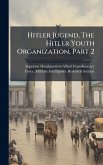A fascinating exploration of why Hitler's death was only confirmed in 2018 Adolf Hitler has taken a long time to die, despite the lethal efficiency of the gun he put to his head in April 1945. Although eagerly anticipated around the world, there were no available witnesses to his suicide-and his corpse was not put on display. This created the perfect vacuum for myth and survival legends, while rival intelligence agencies and propaganda further confounded the investigations of successive historians. Caroline Sharples explores the aftermath of events at the Fuhrerbunker in the first cultural account of this decisive yet elusive moment. Hitler's death was widely anticipated, and the news elicited a huge range of emotions as governments and secret services scrambled to verify what they heard. The search for proof of death led to an outpouring of conspiratorial thinking, and the final moments of Hitler's life have been reimagined ever since. This is an intriguing, unsettling account of a historical event we all think we know-and a sophisticated examination of how history is written.
Bitte wählen Sie Ihr Anliegen aus.
Rechnungen
Retourenschein anfordern
Bestellstatus
Storno








